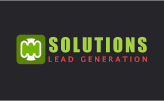Looking to The Future
The successful business marketing approach in recent years won’t work as well in today’s digital world. Building a brand, responding to customer expectations, and developing a strong competitive advantage are within reach of businesses that leverage technology and take advantage of digital transformation. Thanks to this information technology, most customers know what they want, who they want it from, and what they want to pay before they buy. Growing your business means reaching potential customers and guide/ help them to make up their minds to buy from you. The strategy in reaching this potential customer is called leads generation.
According to the sixth State of Marketing report from Salesforce, 32% of marketers own lead generation and 65% contribute to it:
• Marketing leads,
• sales effectiveness, and
• customer acquisition costs
are the most important metrics for measuring lead generation success. Let’s take a closer look at how lead generation works, and how robust strategy can help us grow your business.
What Is Lead Generation?
Leads are people who are potentially interested in buying a particular product or service. Lead generation lets you reach potential customers early in their buyer journey, so you can earn their trust, build a virtual relationship with them and guide them to make a buying decision with you.
Digital Lead Generation
we can generate leads based on specific criteria and demography. Companies and Businesses accumulate information about their key prospects and tailor marketing strategies, messaging, and sales pitches to make the conversion and boost sales. This is achieved via digital channels, using a combination of inbound and outbound marketing strategies.
Considering that over 95% of the buying population spend most of their time online, developing a strong digital presence is a key part of lead and pipeline generation. This is best achieved via inbound marketing strategies such as content marketing, opt-in forms, and search engine optimization. All of these approaches combine, drive prospective customers to your website. Technology has made it easier for companies to understand and target prospects. With the right data, you can tailor your online presence to your buyers’ needs and set the stage for successful business outcomes.
Clarifying Leads Generation
Once interested customers engage with your brand or services, they are looking for something more than an old-fashioned sales pitch. They want to trust your brand and feel good about buying what you’re selling. In Business-to-consumer and Business-to-Business marketing, the onus on you to gain the customer trust and build a virtual relationship with them. This is the summary of lead generation and the customer’s journey to purchase. Customer’s journeys may vary across the industry however, managing the journey is about turning each prospect into long-term customers. Every customer journey starts with a lead. Leads generation is about using the right channels to find high-quality inbound and outbound leads and building a buying relationship with every individual prospect. According to Salesforce’s State of Marketing report, the top three channels with the highest lead generation ROI are social media, customer communities, and paid search engine marketing. Better leads yield more consistent sales and business growth.
The Five Different Types of Leads
Comprehending the five different types of leads can help marketing and sales strategy personnel on how to generate leads and work grow any business.
• New Leads are potential customers that you have knowledge of. This could be customers who visited your website and entered their email address, stopped by your booth at a trade show, or walked into your store and signed up for a mailing list.
• Working Leads: These are potential customers with whom you are constantly in contact. Either by newsletters, following you on social media, or actively chatting with you on the phone.
• Nurturing Leads: These are potential customers who may not be interested in your product or services at the moment but might be in the future. Keep in contact with these leads by sending them additional information like newsletters, product announcements, or upcoming webinar schedules so they remember your company when it’s time to buy.
• Dead Leads: are individuals who have no present or future need for the product or service
• Sales Leads: are potential customer who has a need for the product or service and they are ready to buy.
Our object is to convert as many new leads into sale leads. Achieving this task is dependent on a number of factors such as; the product or service and how robust is your online presence. Leads generation strategies of identifying, organizing, and acquiring always apply. Our successes or failures are dependent on how seriously we approached the market.
Always keep in mind that the digital age has changed the way people interact with one another. As a result, customers expect to have that same freedom with the brands they buy from. These customer expectations exist for all businesses, regardless of the size of the organization. The more efficiently your business generates and qualifies new leads, the better you’ll be able to work with them. Let us help your business generate the leads it requires to boost sales.


Add a Comment